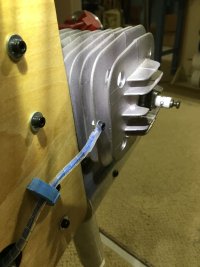Snoopy1
640cc Uber Pimp
Just a point of interest. This concerns gas tanks and fuel lines. Fuel lines has been a pain in the past, especially transparent yellow tygon. Did use Viton for a while especially inside the tank and then standard tygon for the rest. Must say Viton never got hard or showed any degradation, but it did split several times at the nipple. So about three years ago while I was at JoeNall I was introduced to PorFlex. All I can say will never use anything else, it has performed flawlessly, only complaint is that is not cheap. Use it on all my lines except the overflow and vent. What is your experience and has anyone else used ProFlex.

